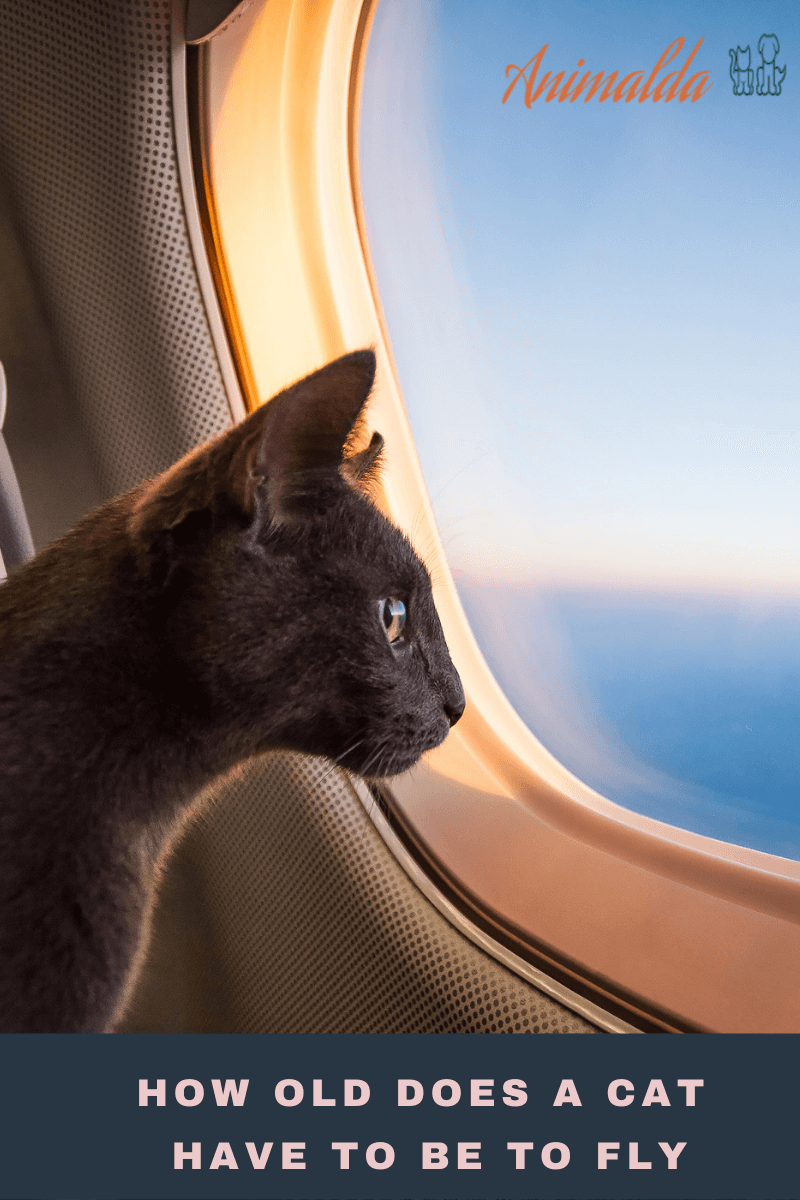Are you worried about air travel with your pet or feline more specifically? Are you wondering whether she is old enough to be flying yet?
Usually, cats are hard to deal with and if you’re worried about flying with cats and the safety issues, we can’t blame you!
Underaged cats face many health issues if they try to fly. This happens because their lungs are still in the developing stage and consequently, they may suffer from breathing problems.
Experts strictly advise some breeds of cats (e.g snubbed nose) against flying to prevent breathing issues.
The rules for the minimum age for cats to be flying on different airlines vary, but in the US, the range is overall from 8 to 15 weeks old.
In the case of domestic flights, your cat needs to be at least 8 weeks old on most airlines.
The required age of your feline will depend on which country or how far you’re flying for international flights. For those specifics, contact your airlines on their official website.
A list of airlines and their minimum age requirements for cats to fly:
United Airlines: 8 weeks old for domestic flights. If the cat weighs less than 2 pounds, then she needs to be 10 weeks old.
Delta Airlines: requires cats to be used to flying and at least 10 weeks old for domestic flights and 16 weeks for an international flight.
For more information on Delta Airlines and their specific pet shipping policies, visit https://www.delta.com/us/en/pet-travel/shipping-your-pet
American Airlines: They also require cats to be 8 weeks old to be able to fly on domestic flights. For international flights, you will again need to consult their official website.
Southwest Airlines: This airline is quite unwelcoming towards cats flying. They prohibit pet cats from flying on their airlines international flights strictly. However, they do allow cats of 8 weeks old and older to fly on domestic flights.
Click here to go to Southwest Airlines’ official site for more information.
Basically, some airlines don’t approve of cats flying AT ALL (including some flights to Hawaii) while others may be strict and prefer weaned pets if at all, in international flights. Otherwise, it is mostly 8 to 10 weeks for domestic flights in most cases. It is always best to contact your airlines in either case.
Tips for flying with a cat:
➽Planning ahead for a trip with a feline is best for a comfortable and hassle-free journey. Keep in mind that flying for snubbed-nosed cats is not preferred. You should think about ground transportation in that case.
➽ You should contact your Airlines for all kinds of details about the seating, dimensions of your pet‘s seat, weight requirements, checked baggage etc, so you can choose a suitable pet container for the cat more easily.
➽ Your cat may either go in the cargo hold or be seated in a pet carrier, under the seat in front of you in the passenger cabin. Regardless, you must consider buying a pet travel crate for your kitty.
➽Ensure that the travel crate you buy checks all the legal, airline, and, industry requirements.
➽Train your cat beforehand to be familiar with the pet carrier, maybe by feeding her there sometimes, and practicing entering and exiting the carrier often.
➽Consult your vet right before traveling with your feline. You will surely need a health certificate for flying the cat anyway since most airlines require you to do it. Talk to the vet about the health conditions of your cat and confirm whether it is safe for her to fly or not.
➽Try to keep all relevant vaccinations and certifications up to date before flying by the last visit to the veterinary inspection.
➽ IF your cat is easily stressed out or panics on a flight, consult the veterinarian about whether any medication is required for the journey. (too many non-content words, rewrite this sentence) Some cats may require sedatives. However, be careful about your specific feline and sedatives, since some cats may experience trauma, and uneasiness and, become even more unsettled and panic.
➽Your pet must have a leash and a firmly packed harness to prevent escaping during the flight.
The leash will especially help while passing the x-ray machines. This is because you have to actually carry your pet with you while the pet carrier enters the machine without the pet.
Keeping your cat on a leash will help you to manage luggage and everything better.
➽Don’t forget to add the label “Live cat” to your carrier.
➽Get a shiny and sturdy pet collar, which has your phone number written on it.
➽Ask for a private screening for free for your kitten from a TSA representative, instead of trying to handle(handling) her on your own through security. This lowers your chances of losing her in the crowd in a panic!
➽Trim your cat’s nails before traveling (travelling), otherwise, they may scratch the interior walls of the cat carrier.
➽Keep rubber gloves close, to better handle waste.
How to keep a cat calm during a flight?
Try to reach the airport early so that you are able to (can) settle down and the kitten and de-stress. It will get him or her more used to the surroundings. If you can make your cat feel comfortable the whole ordeal would become easier.
Aim to take a direct flight to reduce stress on your kitten. Layovers will definitely make this whole adjustment and management difficult so make sure it is unavoidable.
Remember to carry necessary pads, absorbents, napkins etc in case your pet needs to pee or defecate while flying.
Also, aim to choose a suitable carrier that has enough space and air for your cat to stand up in and turn around for comfort, ventilation and mobility.
Choose leak-proof and absorbent floored carriers that also have strong or firm straps.
Ensure strong zippers that the cat cannot open, once inside.
Another smart thing to do is to not feed your cat a lot of food. Ensure she is not very full or has an empty stomach, right before getting on to the plane to prevent vomiting or sickness during the flight.
Pet Fee For Flying
As mentioned previously, all airlines have different pet policies, but in most cases flying a cat can cost up to $125. This is the cost for a one-way domestic flight and one pet per passenger is accepted.
This charge is for flights between and within the US, Canada, Mexico, The Caribbean, South America, and Central America.
The pet is counted as a piece of carry-on luggage. And he or she is to be placed under the seat in front of you, in a comfortable kennel.
There are cheaper alternatives, such as Southwest and JetBlue airlines.
However, in the case of international travel flights, it gets a bit more complicated. Airlines charge extra and sometimes carrying pets costs even more than your own ticket since a lot of care and attention is required to handle them safely through the journey.
The cost of the flight in this case will depend on the crate size and how far away the destination is. Once again, you would want to contact your airlines to confirm the exact details.




